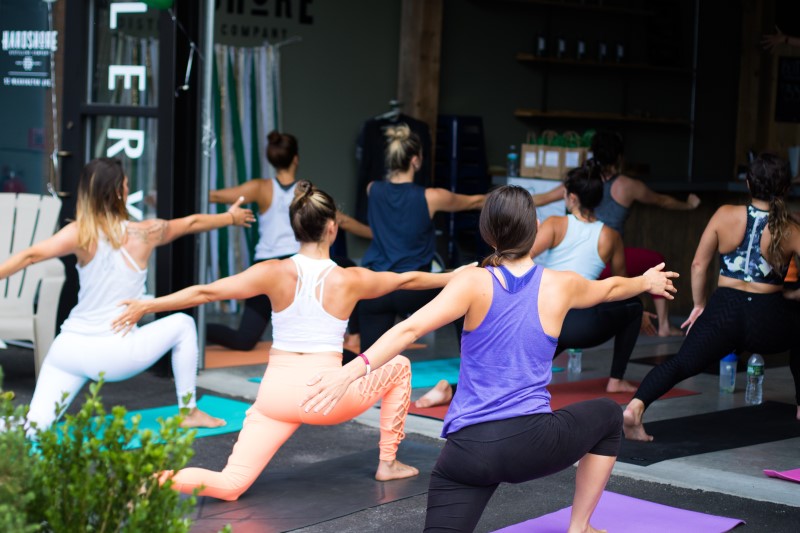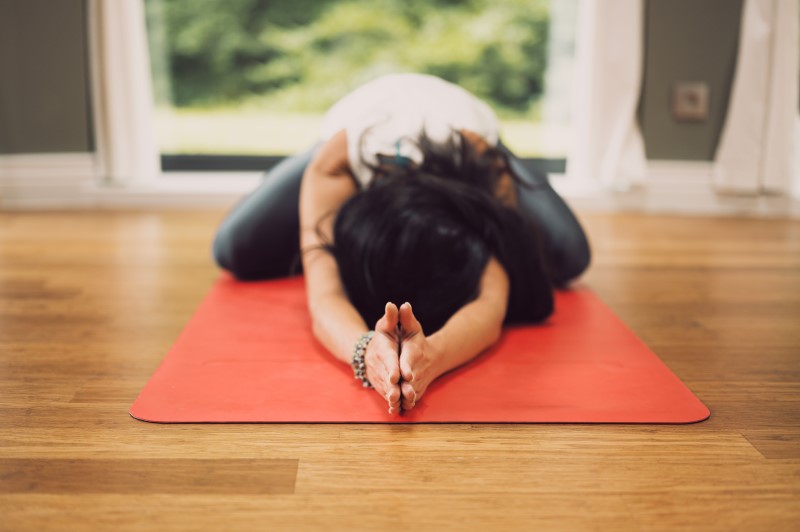Are you looking for a fun and beneficial physical activity to engage your child? Look no further than yoga! Yoga is not just for adults; it can also have numerous benefits for children, including physical and emotional well-being.
This article will explore 11 ways yoga can physically and emotionally benefit your child. Additionally, we will discuss how yoga may strengthen their mind-body connection and why it can benefit children with ADHD or Autism. So get ready to discover the fantastic advantages of introducing your child to the world of yoga!
Key Takeaways
- Yoga provides emotional and mental benefits such as releasing fear, anger, and stress, teaching effective emotion management, and promoting overall well-being.
- It also offers physical benefits such as improving flexibility, building strength, enhancing coordination, and developing balance.
- Yoga promotes developing concentration skills, teaching emotional regulation, enhancing the mind-body connection, promoting self-awareness, and assisting in managing stress and anxiety. These are beneficial for greater self-control and behaviour improvement.
- It strengthens the mind-body connection and focus by enhancing coordination, developing control over the body, cultivating mindfulness and concentration, promoting relaxation and stress reduction, and nourishing overall well-being.
Table of Contents

Is Yoga Appropriate for Children?
Is yoga appropriate for children? Absolutely! Yoga for kids is not only appropriate but also highly beneficial. In fact, introducing yoga to children at an early age can have a profound impact on their physical and mental well-being. Yoga enables children to develop flexibility, strength, and balance while also promoting body awareness and mindfulness. It provides them with the tools to manage stress and anxiety in a healthy way. Additionally, yoga benefits our young ones by improving their concentration and focus, enhancing their coordination skills, and boosting their self-esteem.
By incorporating fun games, storytelling, and playful poses into the practice, yoga becomes an enjoyable experience for children. It allows them to explore their creativity and imagination while simultaneously nurturing their mind-body connection. So go ahead and introduce your little one to the wonderful world of yoga – a path to health and well-being.
Top 5 Physical Benefits of Yoga for Kids
Yoga for kids offers many physical benefits that can significantly enhance their overall well-being. It helps build strength and flexibility, allowing children to develop strong muscles and an improved range of motion. Additionally, practising yoga helps refine balance and coordination, enabling little ones to navigate the world with better control and grace. Not only does it contribute to their physical development, but it also instils a sense of mindfulness and body awareness at an early age.
1. Builds Strength and Flexibility in Children
Yoga for youngsters is not just about relaxation and mindfulness; it also has tremendous benefits for the growing body. You’ll notice increased strength and flexibility with regular yoga practice. Through various poses and movements, yoga builds strength in the muscles of their little bodies.
It helps children develop better:
- balance
- coordination
- body awareness
As they hold poses, stretch, and move through sequences, their muscles become stronger and more flexible.
Yoga practice teaches children how to use their bodies effectively and safely. It encourages them to explore their range of motion while building muscle tone. This increased strength and flexibility will benefit your child in many ways as they grow up. From playing sports to everyday activities like climbing stairs or carrying groceries, having a strong and flexible body will help them stay active and healthy.
2. Develops Childrens Motor Skills
Yoga can be a fantastic activity for children, as it helps develop their motor skills in various ways. It assists fine motor skills by encouraging them to hold and manipulate yoga poses requiring coordination and control. Additionally, yoga improves gross motor skills by engaging the whole body in movements that strengthen muscles and enhance balance.
What are ‘Fine’ and ‘Gross’ Motor Skills?
Fine motor skills refer to the small movements and coordination of muscles in the hands, fingers, and wrists. Writing, drawing, buttoning clothes, and using utensils require fine motor skills.
On the other hand, Gross motor skills involve larger muscle groups and whole-body movements. These skills include activities like running, jumping, climbing, throwing, and kicking. Gross motor skills are essential for activities that require coordination, balance, and strength.
3. Yoga Assists with Fine Motor Skills
Improve your youngster’s fine motor skills with yoga. Here are four ways yoga aids the development of your child’s fine motor skills:
- Enhances hand-eye coordination: Yoga poses like ‘tree pose’ and ‘downward dog’ require precise movements, improving your child’s ability to coordinate their hands and eyes.
- Strengthens finger muscles: Various yoga techniques involve intricate hand movements, such as placing fingers in specific positions or holding objects, which help build strength in the finger muscles.
- Improves dexterity: Yoga encourages children to perform delicate movements with their fingers, promoting improved dexterity and control over small objects.
- Refines pencil grip: Yoga postures that involve gripping or balancing objects can assist in developing a better pencil grip for writing and drawing during early childhood.
4. Yoga Improves Gross Motor Skills
Enhancing gross motor skills, yoga aids your little one in developing coordination and control over larger muscle groups. Through a well-designed yoga program, kids can practice yoga positions that engage their entire body, promoting physical health and overall well-being. These activities improve strength and balance and enhance flexibility and body awareness. By incorporating yoga into your child’s routine, you are providing them with numerous benefits that will support their development and growth.
5. Refines Balance and Coordination
Practising yoga enables younger children to develop better balance and coordination skills. It is a fun and interactive way for them to refine these important physical abilities. Here are three key ways that yoga benefits children by refining their balance and coordination:
- Yoga poses require children to engage specific muscles, helping them improve their body awareness and control.
- Balancing poses like tree pose, or airplane pose challenge children to find stability in different positions, which enhances their overall sense of balance.
- Yoga incorporates flowing movements and transitions between poses, allowing children to practice coordinating their movements with their breath.
By regularly practising yoga, children can improve their physical abilities while having fun. The combination of stretching, balancing, and coordinated movements makes it an ideal activity for young children still developing these skills.

Top 5 Emotional Benefits of Yoga for Children
Yoga for children offers many emotional benefits that can greatly enhance their overall well-being. It improves focus and attention span, allowing them to concentrate better on tasks at hand. By practising yoga, children also boost their self-esteem and confidence as they become more aware of their bodies and develop a sense of accomplishment. Additionally, it reduces stress and anxiety, providing them with tools to manage their emotions effectively.
1. Improves Focus and Attention Span
To improve focus and attention span, children can benefit from practising yoga. Yoga can help children develop their ability to concentrate and stay focused on a task for longer periods of time. In a yoga class, children learn various poses and breathing techniques that require them to pay close attention to their body movements and breathing. This helps them cultivate mindfulness and become more aware of the present moment. By regularly engaging in yoga, children can improve their focus and attention span both on and off the mat.
During a yoga class, children are encouraged to tune into their bodies and listen to their inner selves. This process enables them to understand better their thoughts, emotions, and sensations, which in turn allows them to enhance their concentration skills. Moreover, through activities like balancing poses or guided visualization exercises, children learn how to maintain mental clarity even when faced with distractions.
2. Boosts Self Esteem and Confidence
When you engage in regular yoga practice, it can boost your self-esteem and confidence. Yoga for children and young ones is a wonderful way to teach them how to connect with their bodies and minds. Yoga can help children develop a positive body image and a strong sense of self-worth through various poses, breathing exercises, and relaxation techniques. They become more aware of their capabilities and strengths as they learn to balance and focus during yoga sessions.
This newfound self-awareness translates into improved self-esteem as they realize they can achieve goals and overcome challenges. As well as this, the supportive environment created during yoga classes encourages children to take risks and step out of their comfort zones, further boosting their confidence levels. So, if you want your child to develop a healthy sense of self-esteem and confidence, consider introducing them to the wonders of yoga.
3. Reduces Stress and Anxiety
Regular yoga practice can help reduce stress and anxiety in children and adults. When it comes to children, the emotional benefits are immense. Youngsters often experience frustration, fear, and anger as they navigate daily activities. Yoga provides them a safe space to release these emotions and learn healthy coping mechanisms. Children can calm their minds and bodies through gentle movements, deep breathing exercises, and relaxation techniques. This reduces stress and teaches them how to manage their emotions effectively.
By incorporating yoga into a child’s routine, parents or caregivers can provide them with a valuable tool for managing stress and anxiety in a healthy way while promoting both their physical and emotional development.
4. Helps with Self-Control
Classroom yoga is a great way to help children improve their self-control skills. By incorporating yoga into their daily routine, kids learn how to focus their attention and regulate their emotions.
Here are some fantastic focus and control benefits of yoga for kids:
- Improved concentration: Yoga techniques require balance and focus, which helps kids develop better concentration skills.
- Emotional regulation: Yoga teaches children how to manage emotions and respond calmly in stressful situations.
- Mind-body connection: Through breathing exercises and physical movements, kids learn to connect with their bodies and understand the importance of self-awareness.
Kids need tools to navigate through life’s challenges, and yoga is a great way to provide them with these tools. So why not introduce your little ones to the world of yoga?
5. Assists a Child’s Behaviour
Introducing your little ones to yoga can improve their behaviour. Yoga for children, especially children, is a wonderful way to help them develop essential skills while having fun. The practices they learn promote mindfulness and self-awareness, allowing children to understand their thoughts and feelings better.
Yoga teaches children essential life skills such as patience, discipline, and impulse control. Regular practice teaches them to pause before reacting impulsively, promoting self-control in various situations. Children also interact with their peers in a positive and structured environment, enhancing their social skills.
By incorporating yoga into a child’s routine from an early age, parents can support the development of healthy habits that will benefit them throughout their lives. So why not roll out the mat and start exploring the numerous benefits of yoga for your little one’s self-control and behaviour?

How Yoga Strengthens the Mind-Body Connection
Yoga strengthens the mind-body connection by improving focus and coordination in children. It is a wonderful practice that offers numerous benefits for their overall development. By engaging in yoga postures and breathing exercises, children learn to connect their breath with movement, enhancing their awareness of the mind-body connection.
For children who are just beginning to explore their physical abilities, yoga can help them develop better control over their bodies. They learn to balance and coordinate different body parts through simple poses like downward dog or tree pose. This not only enhances their physical strength but also cultivates mindfulness and concentration.
When started in early childhood, a yoga routine promotes an ongoing source of relaxation and stress reduction in children. It helps them become more attuned to their emotions and teaches them a healthy way to manage stress.
Overall, yoga provides a holistic approach to nourishing both the body and mind of young children, offering long-lasting benefits for their well-being.
How Children with ADHD or Autism May Benefit from Yoga
Children with ADHD or Autism can find relief and improved focus through regular yoga practice. Yoga, specifically tailored for children with autism, can provide them with a safe and calming environment to explore their bodies and minds. By engaging in different poses, deep breathing exercises, and mindfulness techniques, children with ADHD or autism can experience a strengthened mind-body connection.
Yoga encourages children to develop body awareness, flexibility, strength, and coordination. Through the practice of yoga, children learn to regulate their emotions and manage stress more effectively. The structured nature of yoga classes also helps children with ADHD or autism by providing a predictable routine they can rely on.
Moreover, yoga can improve social skills as it often involves partner poses and group activities. This allows children to interact with others in a supportive and non-competitive environment. Additionally, focusing on mindfulness during yoga sessions helps children become more ‘in the moment’ and enhances their ability to concentrate.
Conclusion
As I hope that you would agree, practising yoga may have numerous benefits for children. Not only does it enhance their physical strength and flexibility, but it also promotes emotional well-being by reducing stress and anxiety. Yoga helps children develop a strong mind-body connection, allowing them to understand better and control their emotions.
Children with ADHD or autism can significantly benefit from yoga’s calming and grounding effects. So why not introduce your child to the beautiful world of yoga? They might discover a lifelong practice that nurtures both their body and mind.
About the Author

ALEX
Alex is an adventurous guy in his early 30s who embodies a touch of the hippie. Passionate about social and environmental causes, he’s managed to travel the world, from immersing himself in Japanese culture for a year to embarking on a six-month backpacking escapade through Peru. Alex loves to learn and has taken numerous courses in Environmental Science and Conservation.
Alex’s commitment to recycling fuels his mission to repurpose discarded items. As a result, he favours garage sale treasures over department stores. He prefers walking and biking to driving. Alex spreads awareness about organic living through Just Organics, joined by his like-minded friend Charlie.
